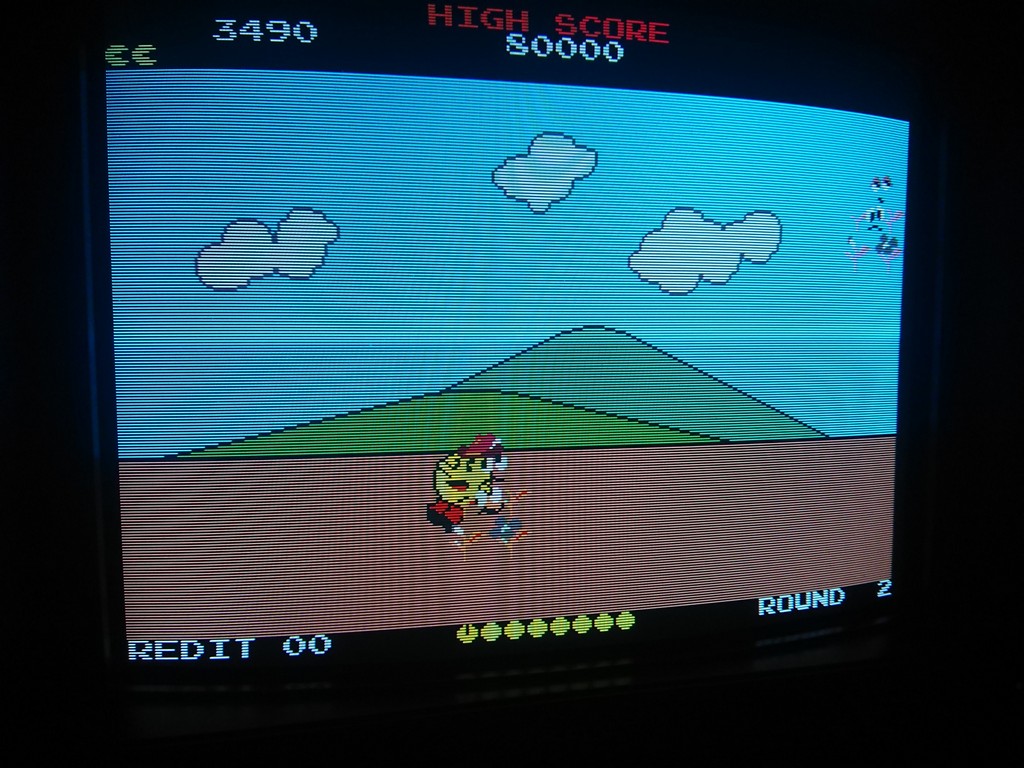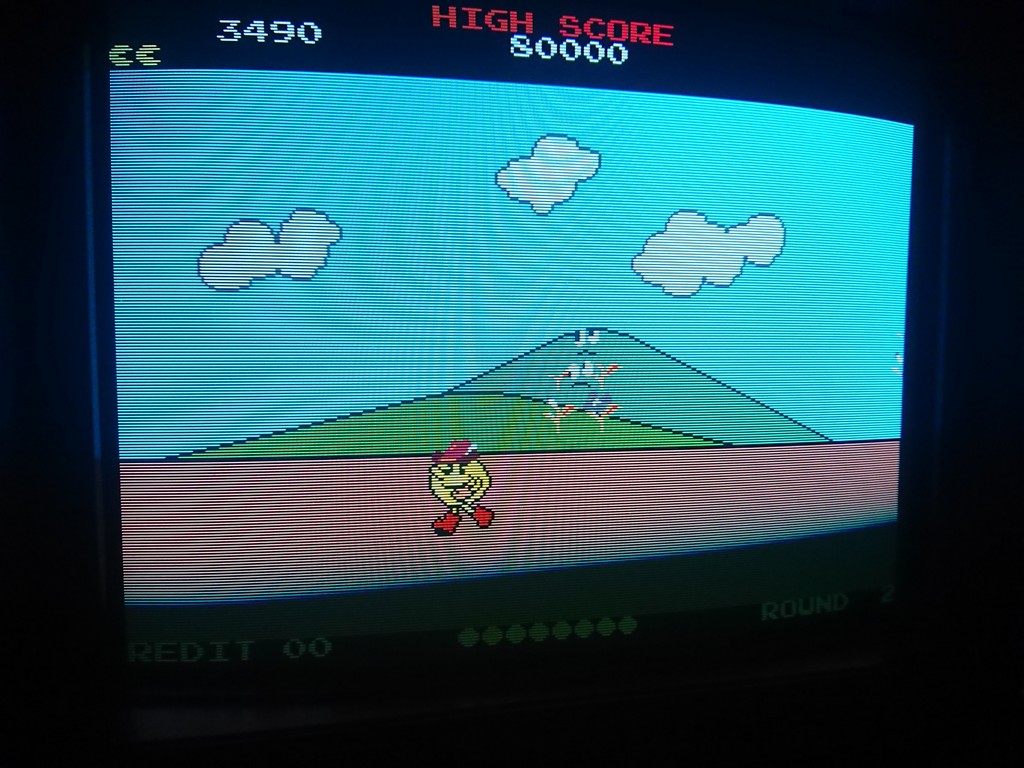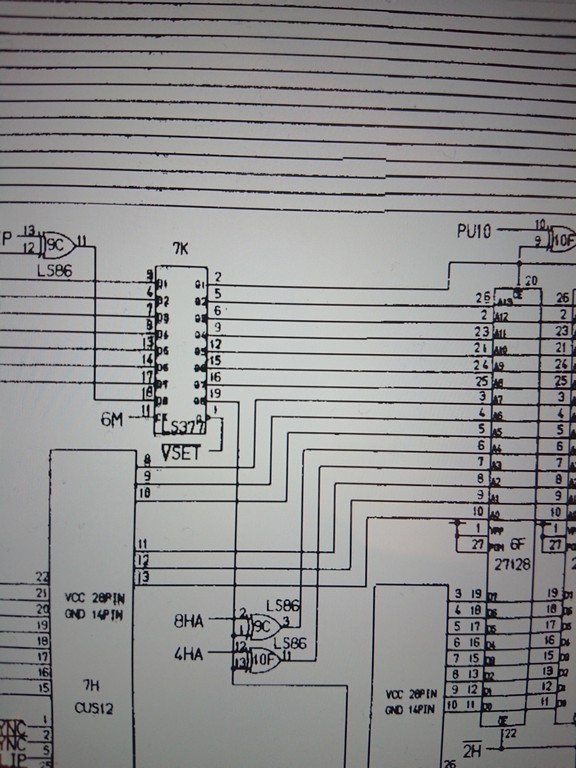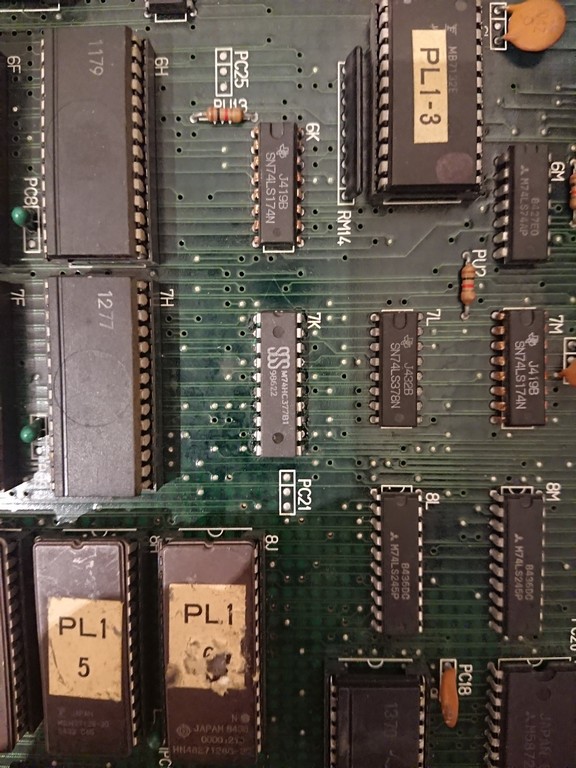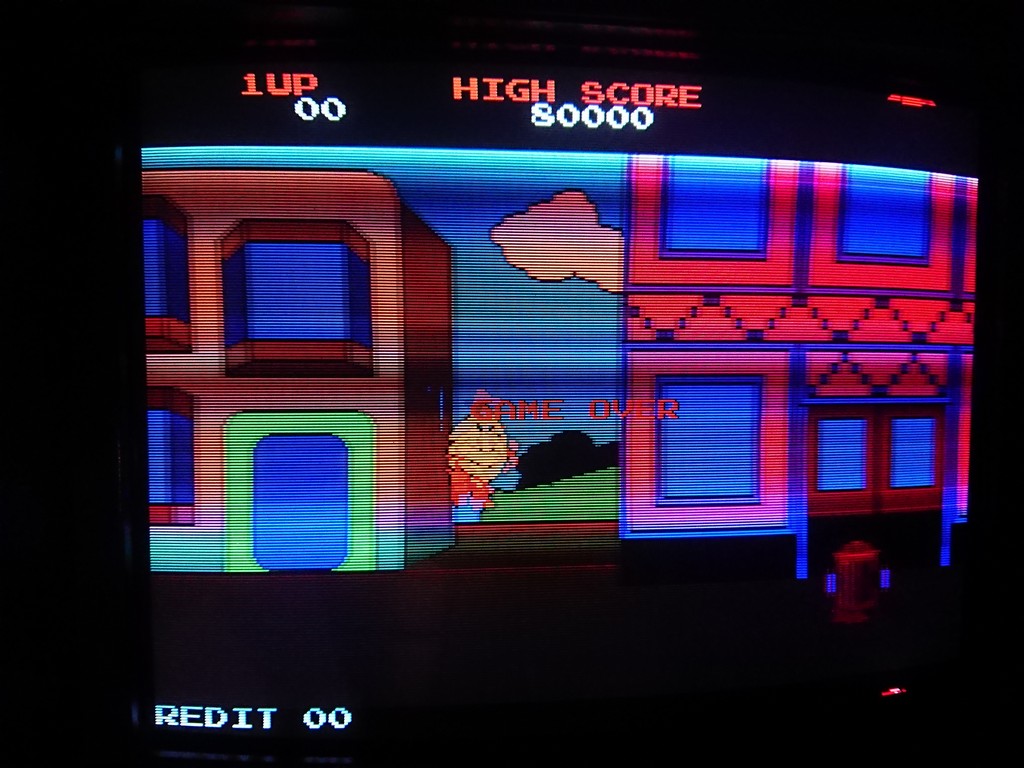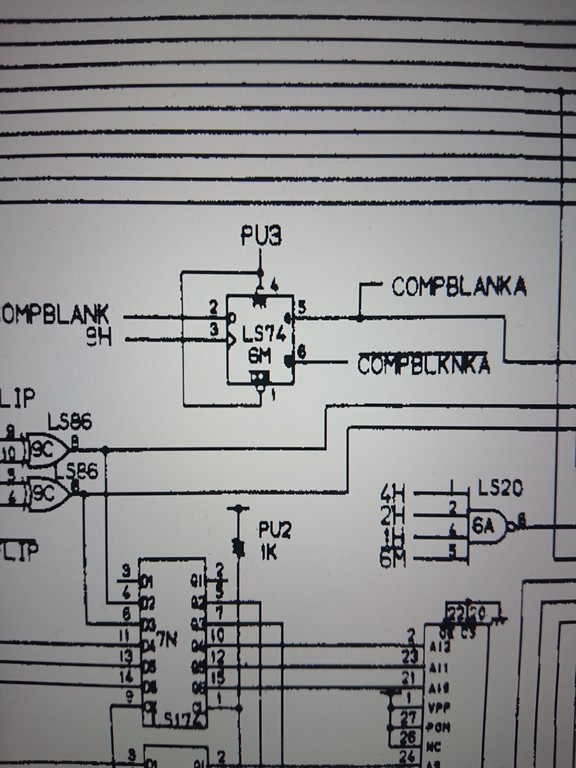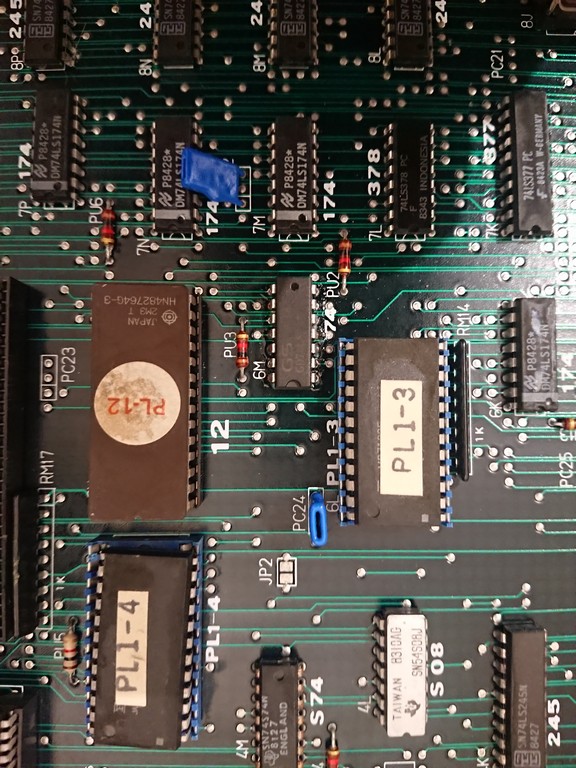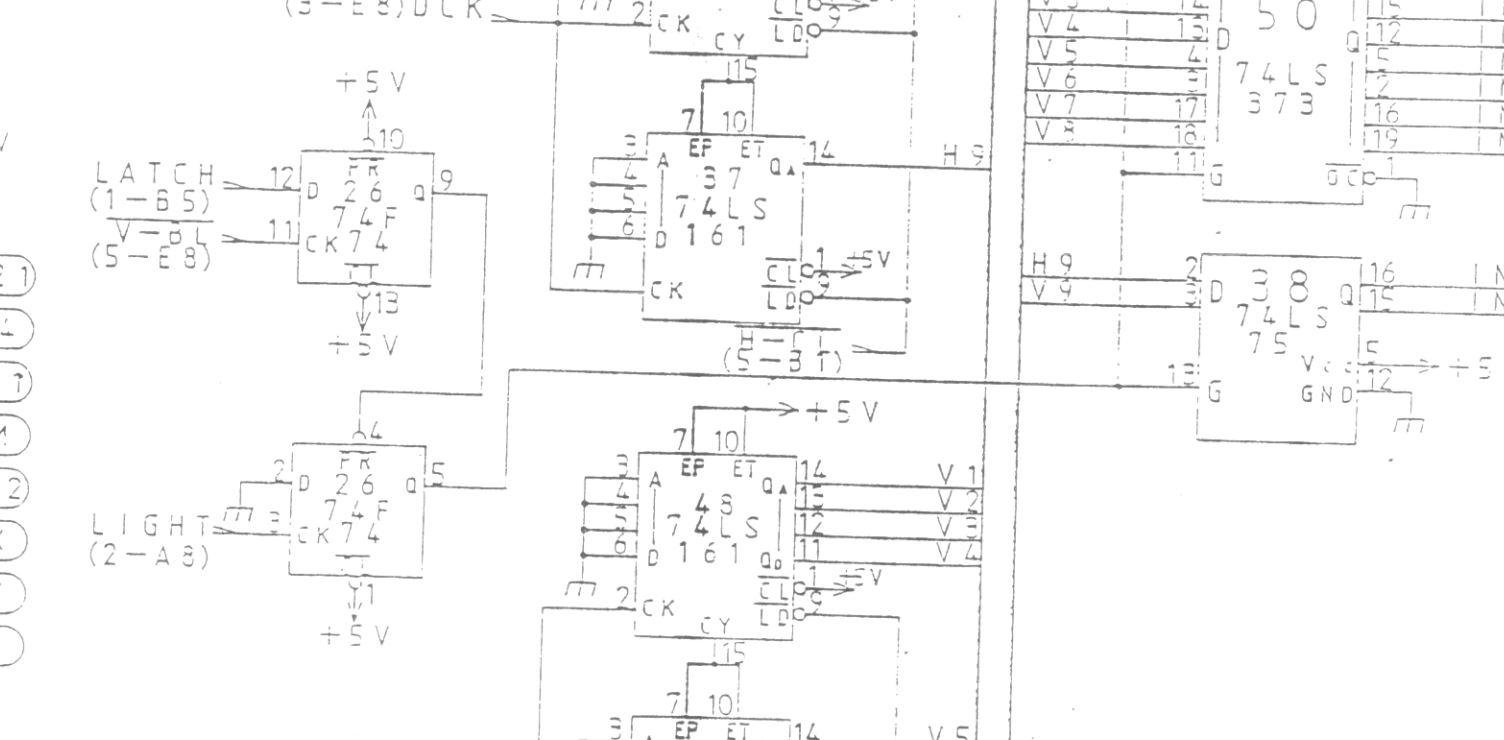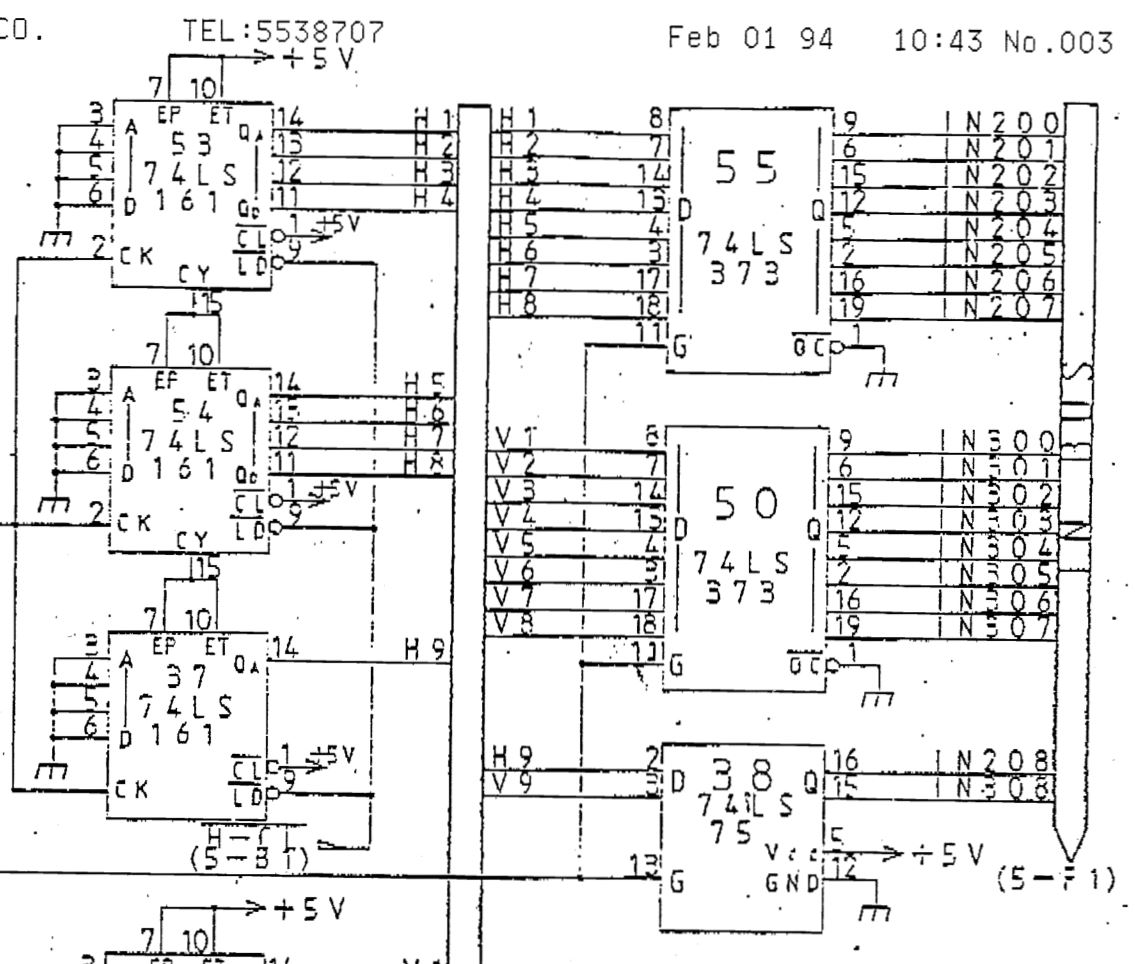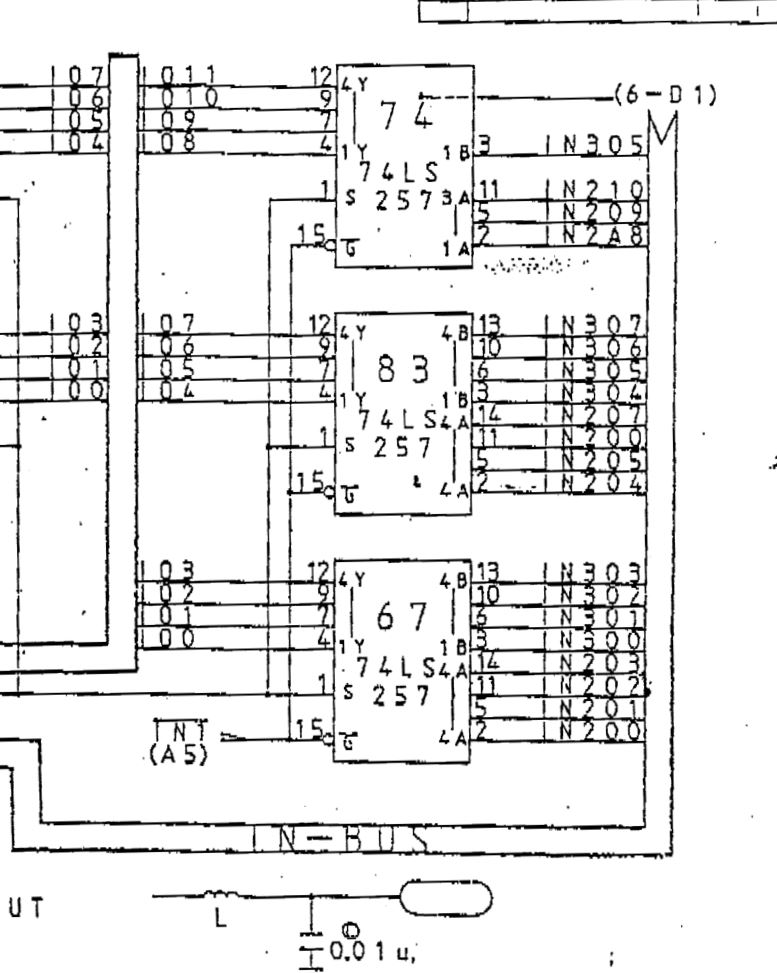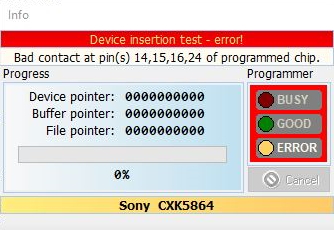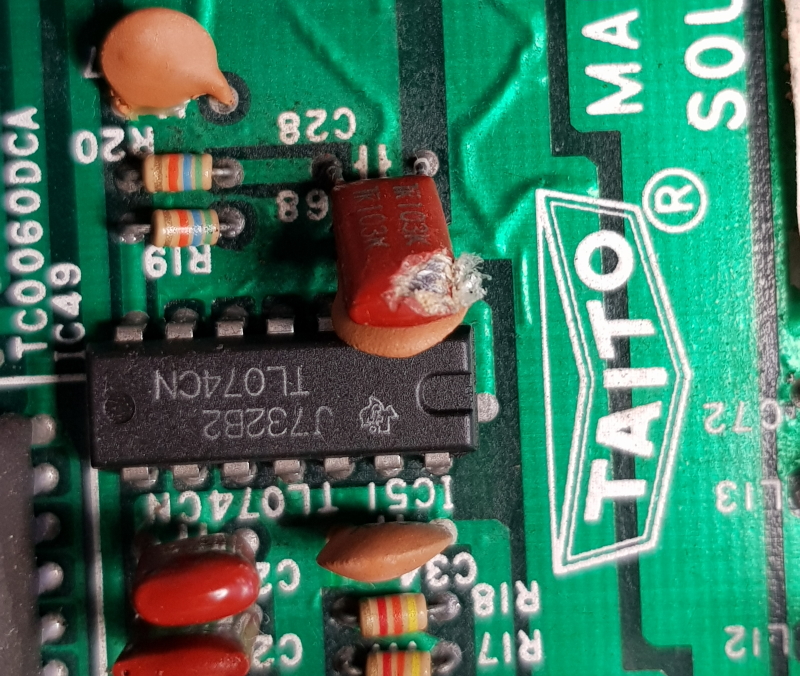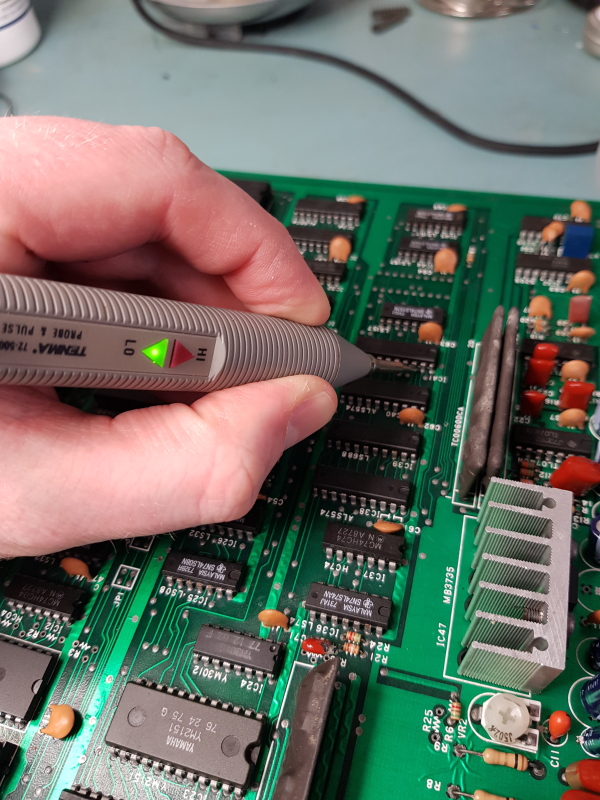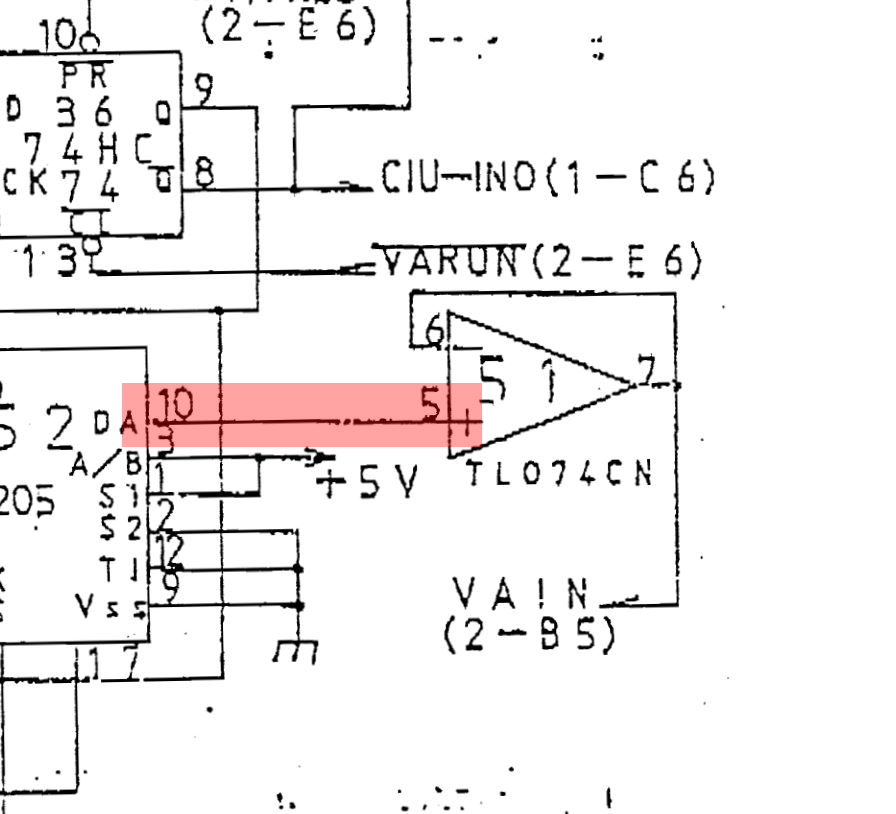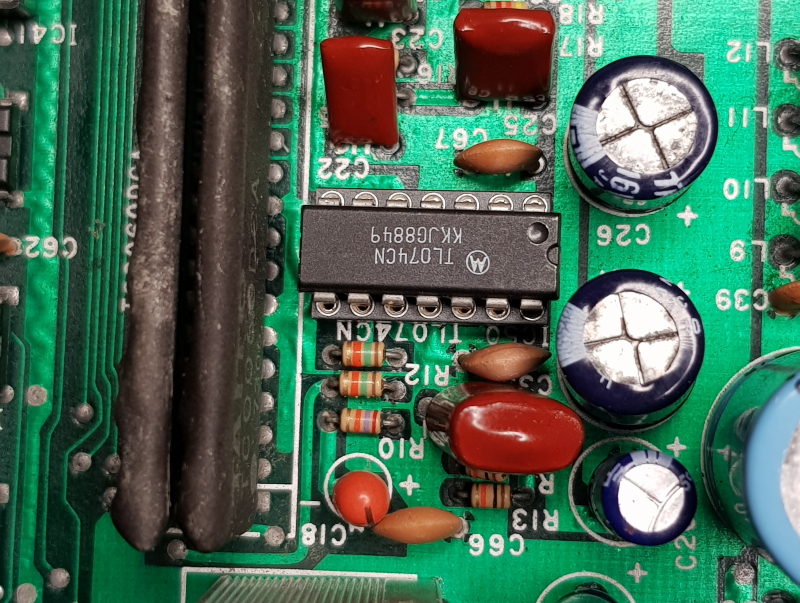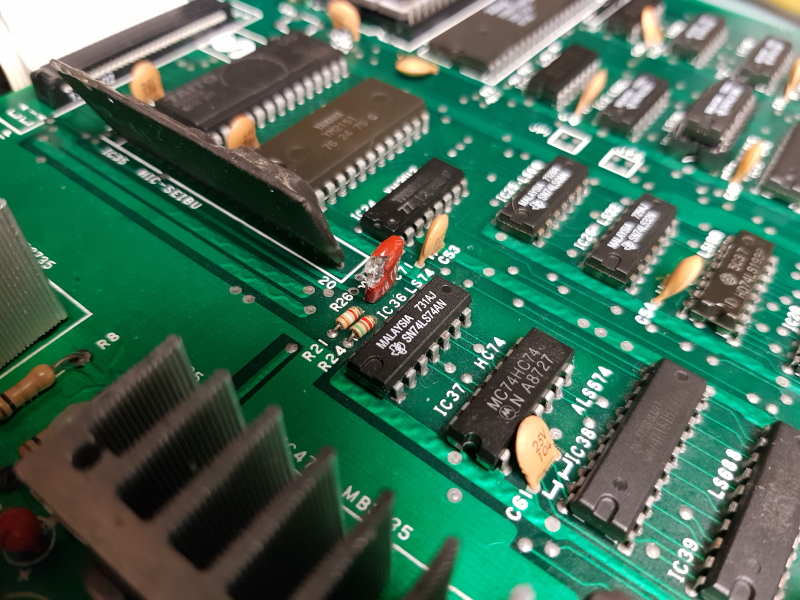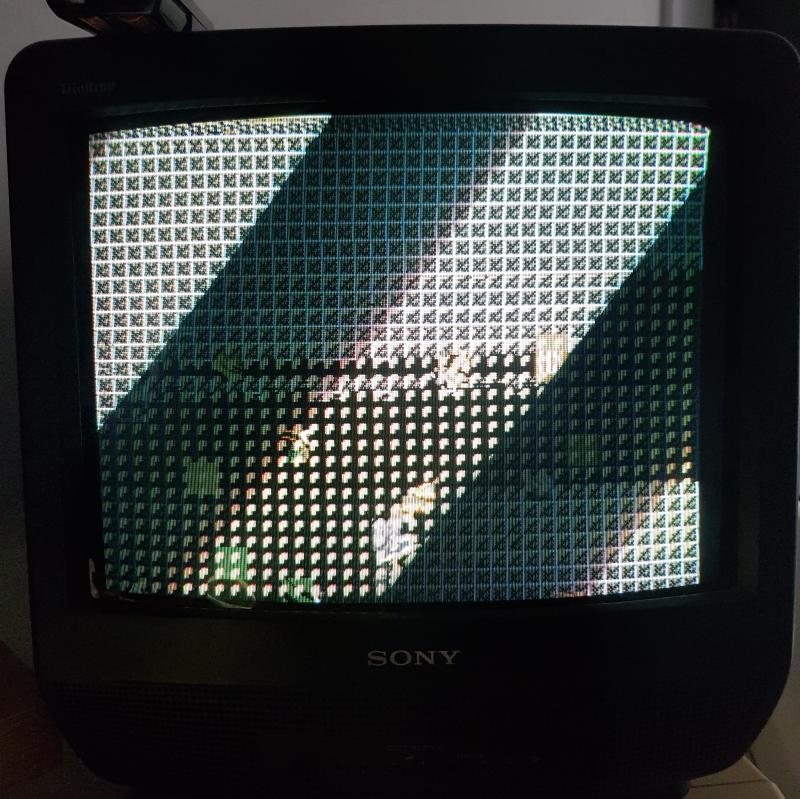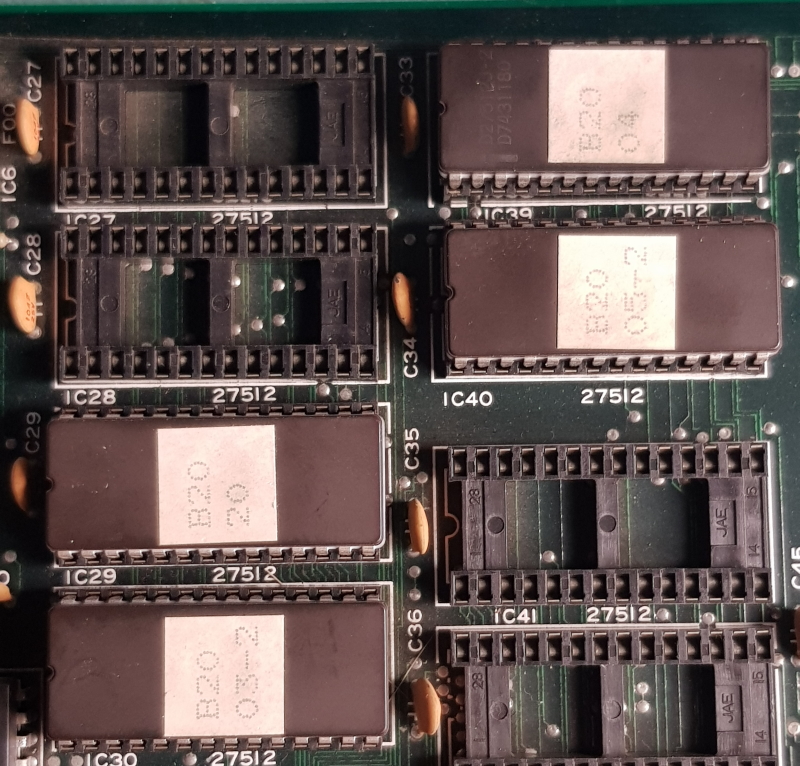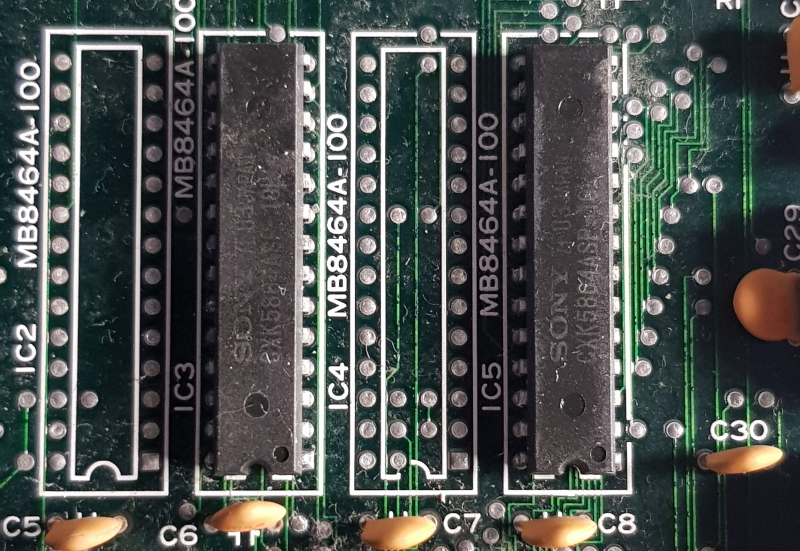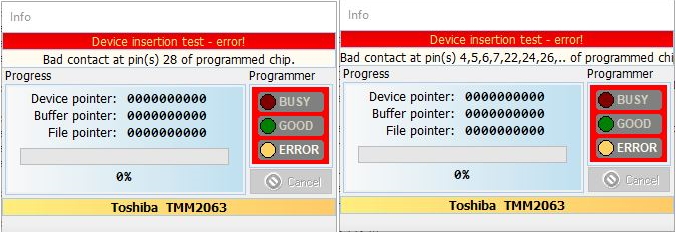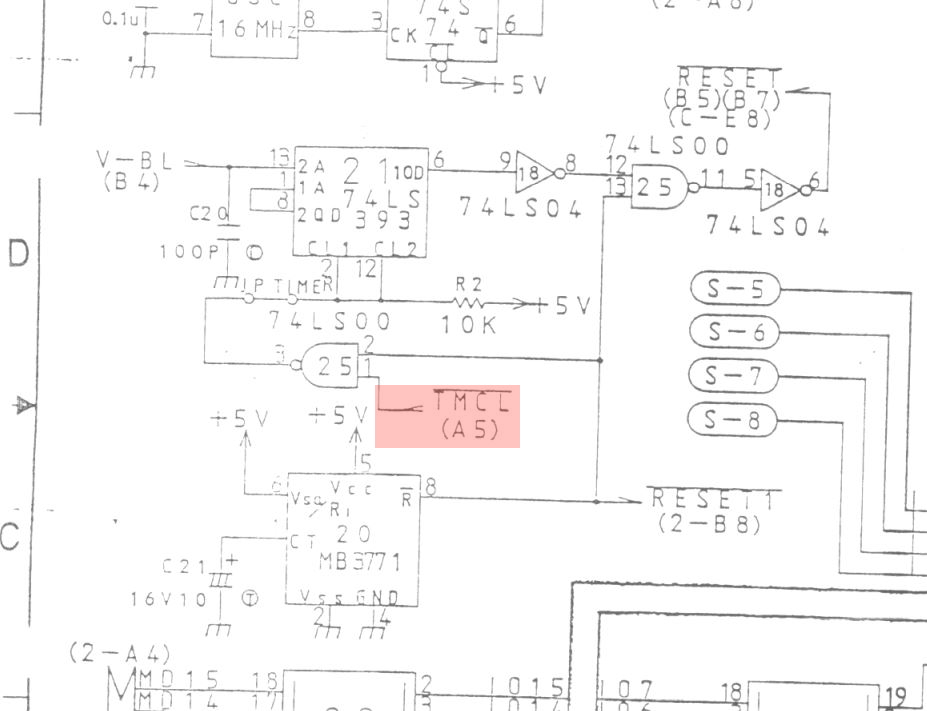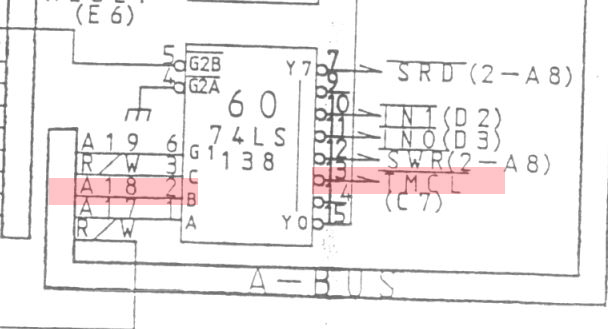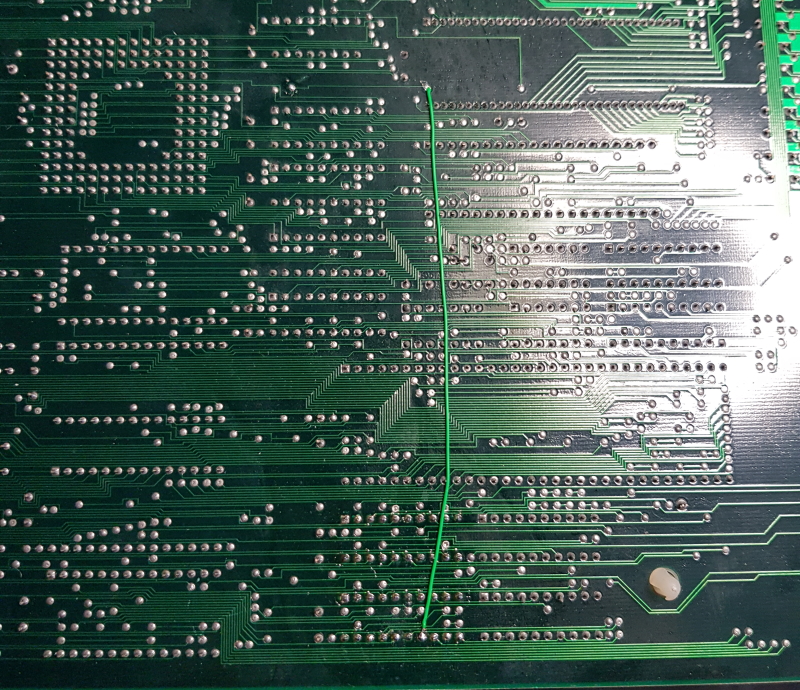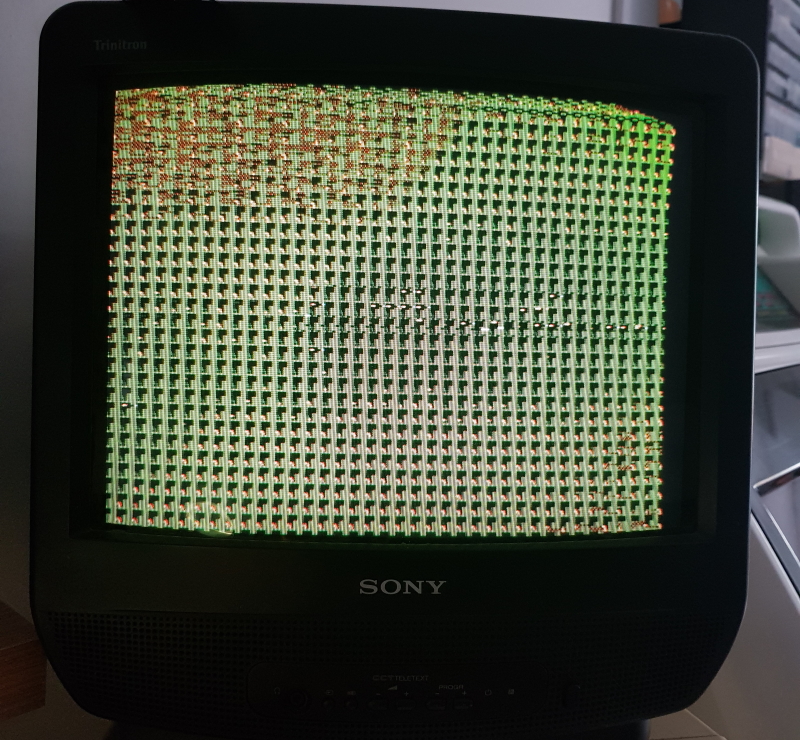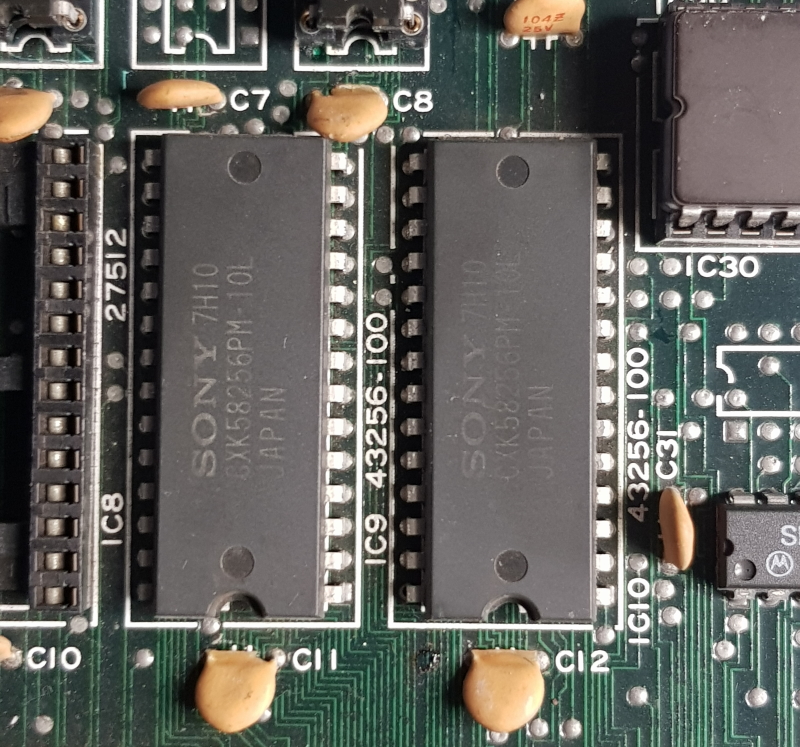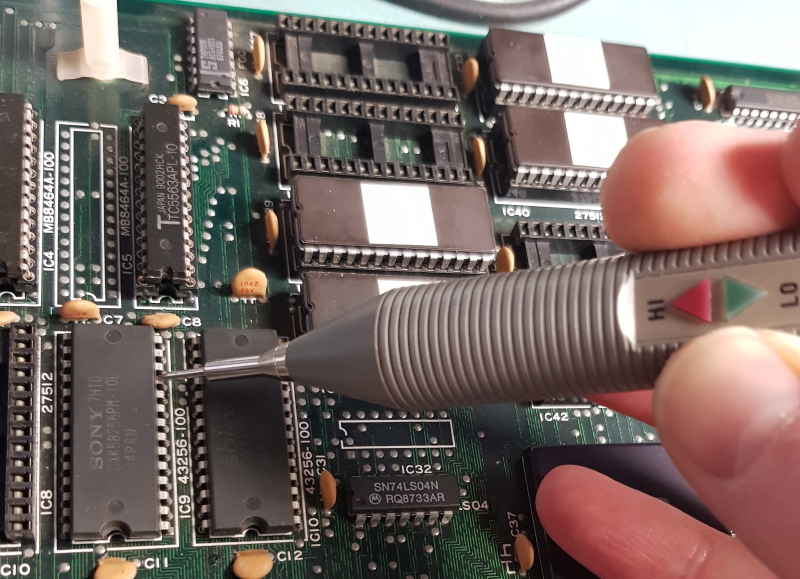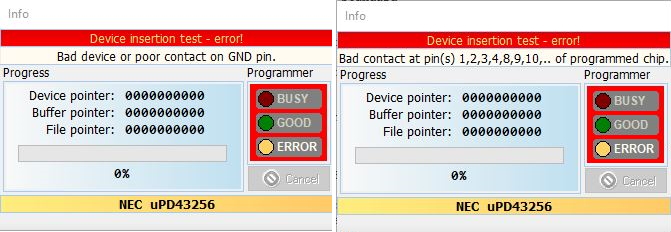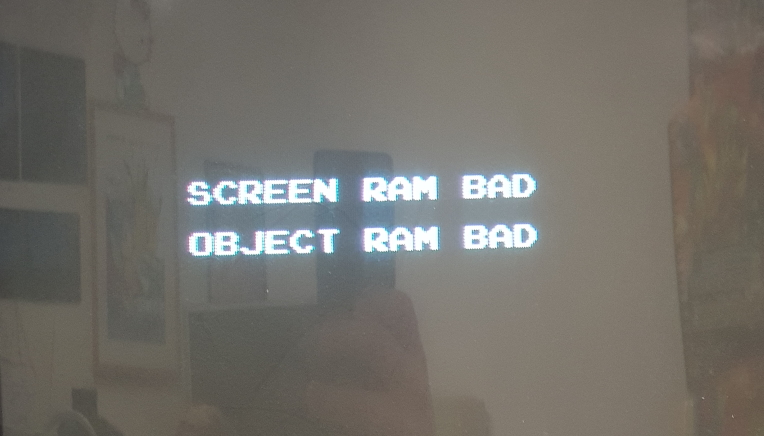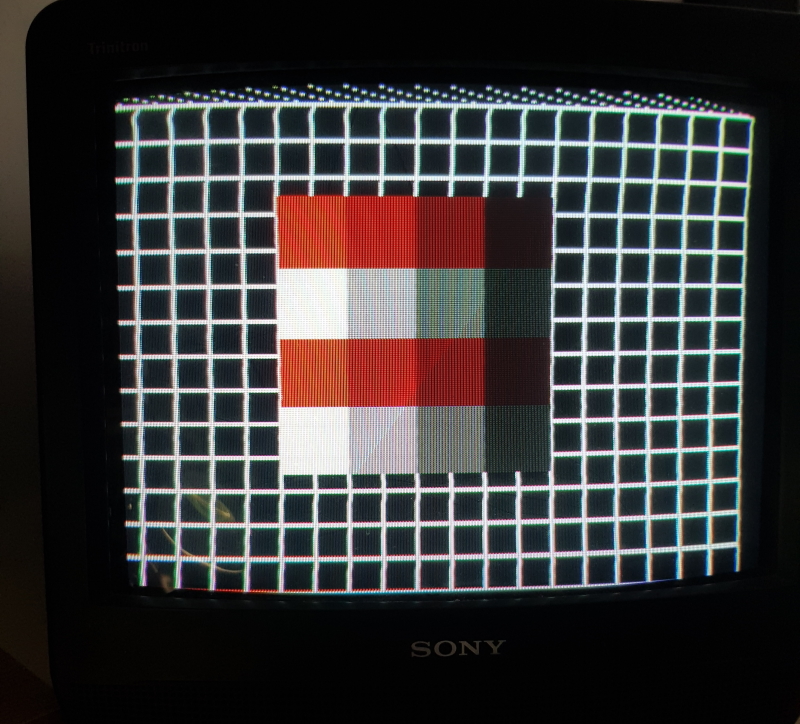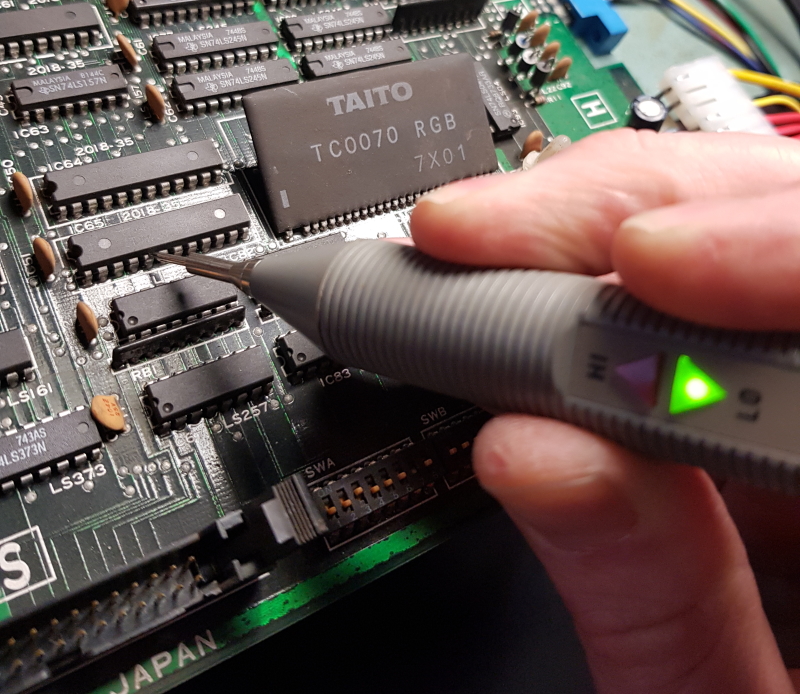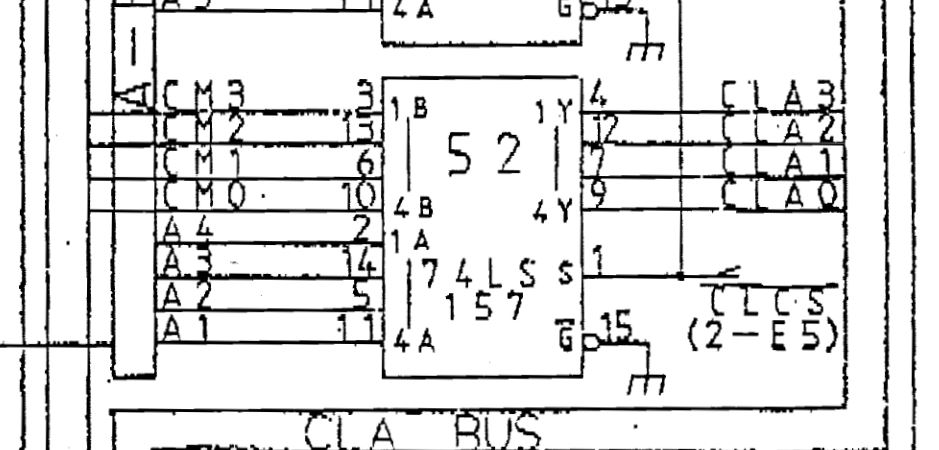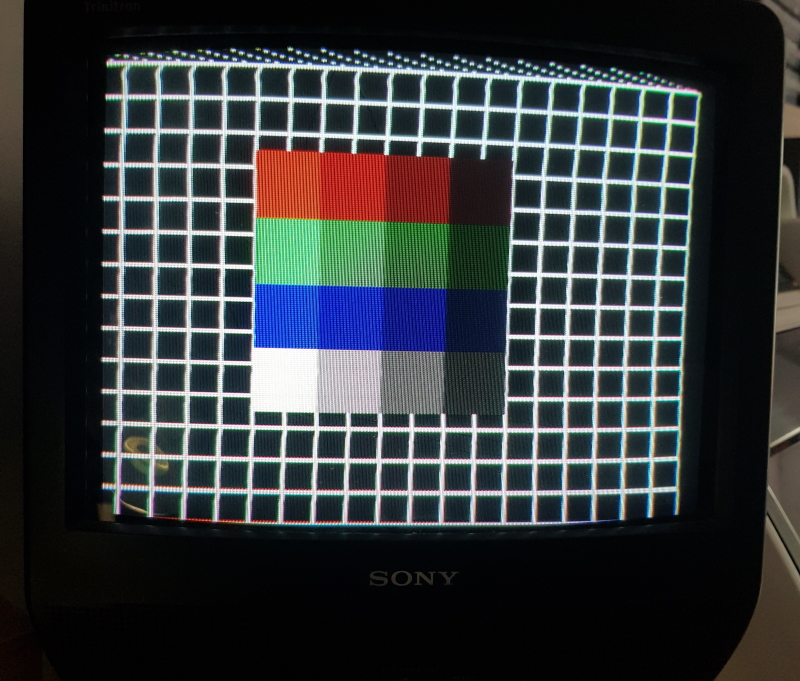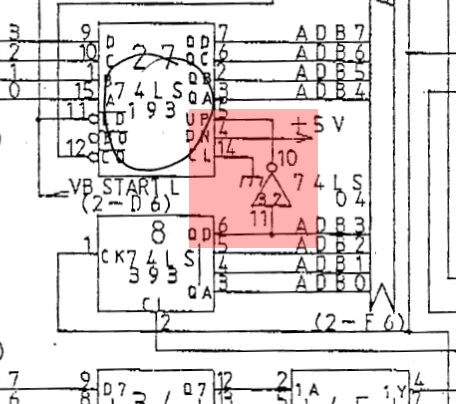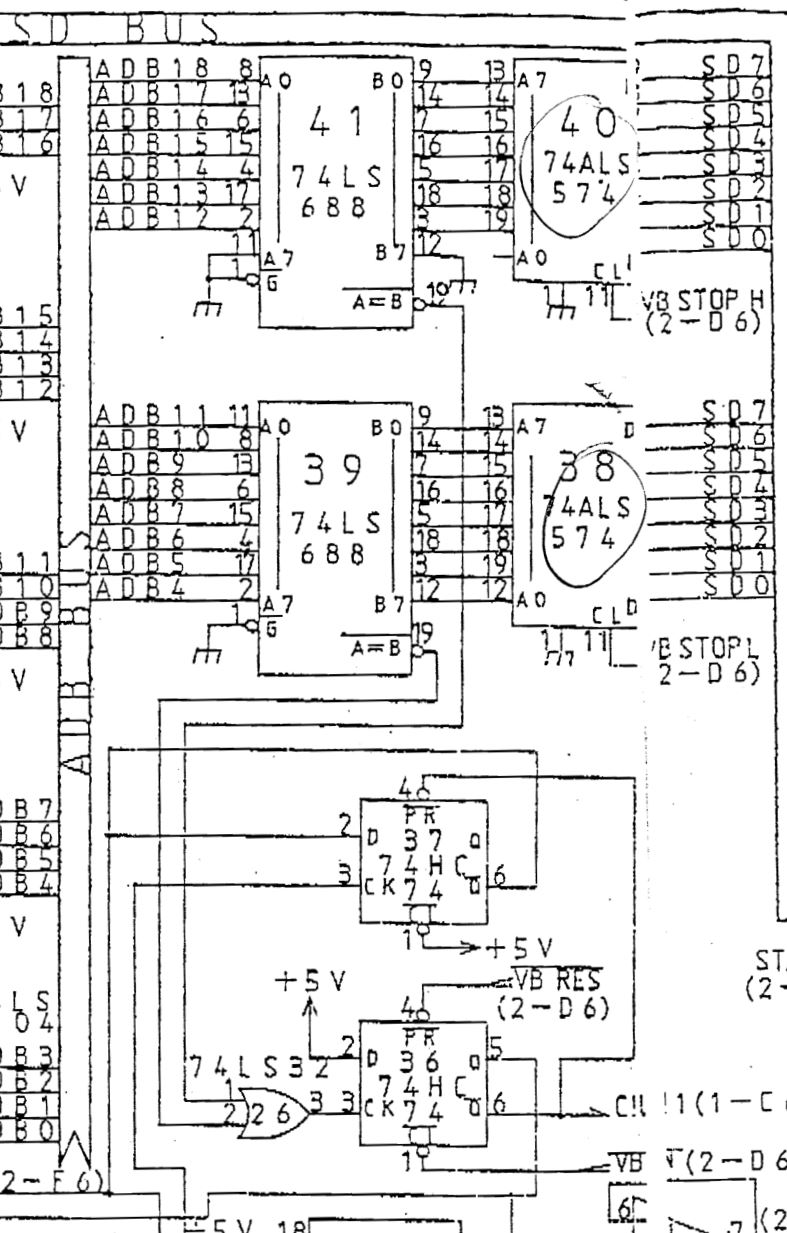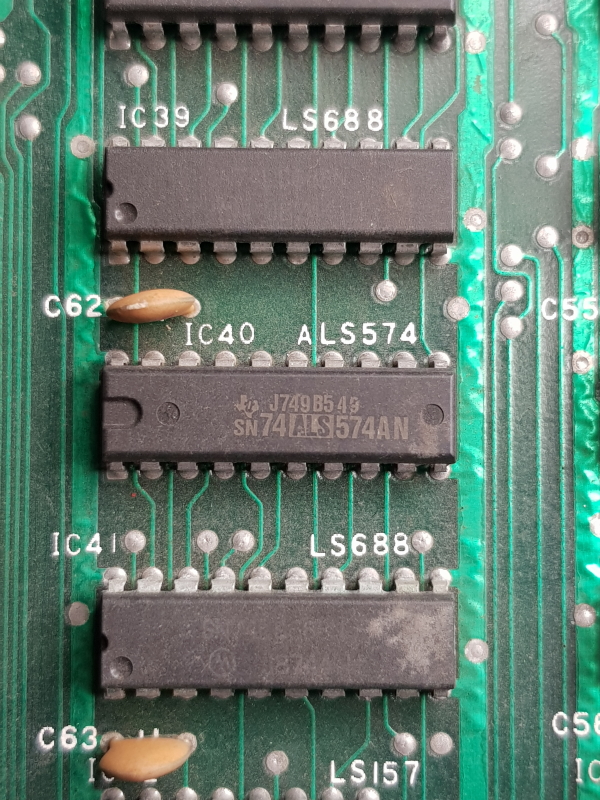The game at first didn’t boot due to the watchdog circuit being triggered.
There were 4 work srams by Toshiba and first one from left was faulty.
Unfortunately soon after , game started to reset again and the second sram from left failed.
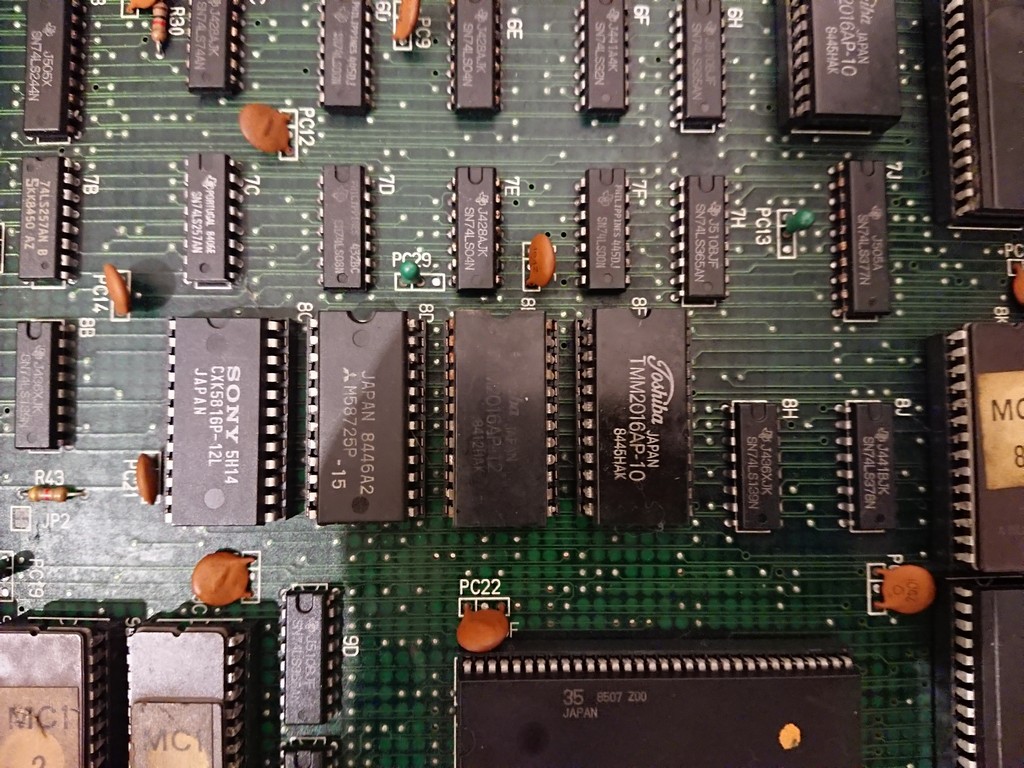
The PCB had then all sprites in a single row and was missing the text on the upper and bottom area and soon after it losts also the BLUE component
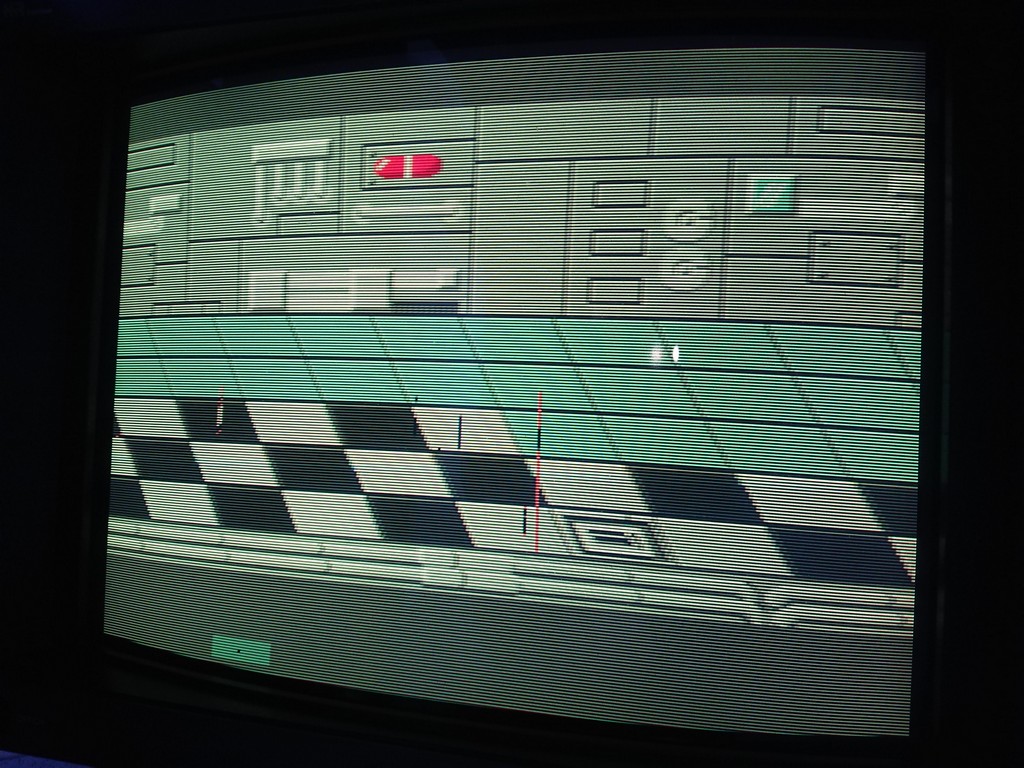
Decided to start from the easy part and restored the missing colour.
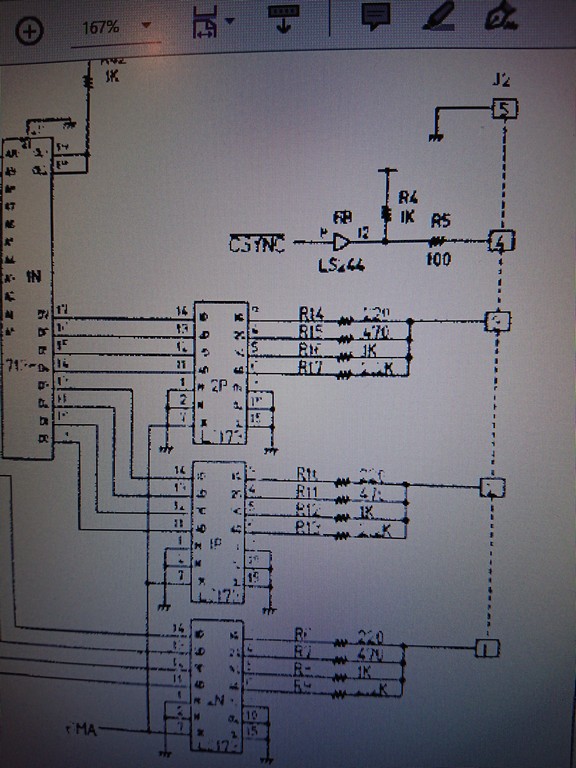
Green and blue components are generated by the PROM @ 1N.
Signals were good so the fault was in the 74LS173@2P which had all output stuck at 0V
After changing the TTL I restored the blue component.
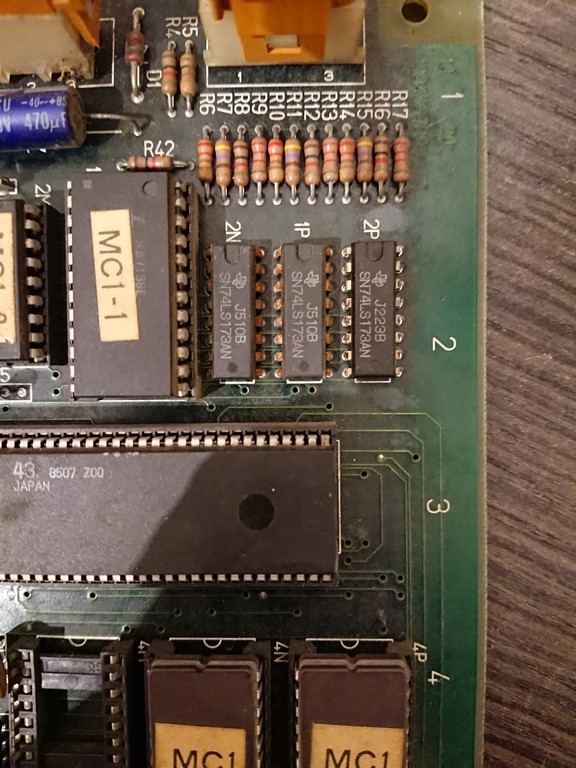
The missing text was due to the 74LS195@6L , while checking it I saw that the text reappeared but glitched
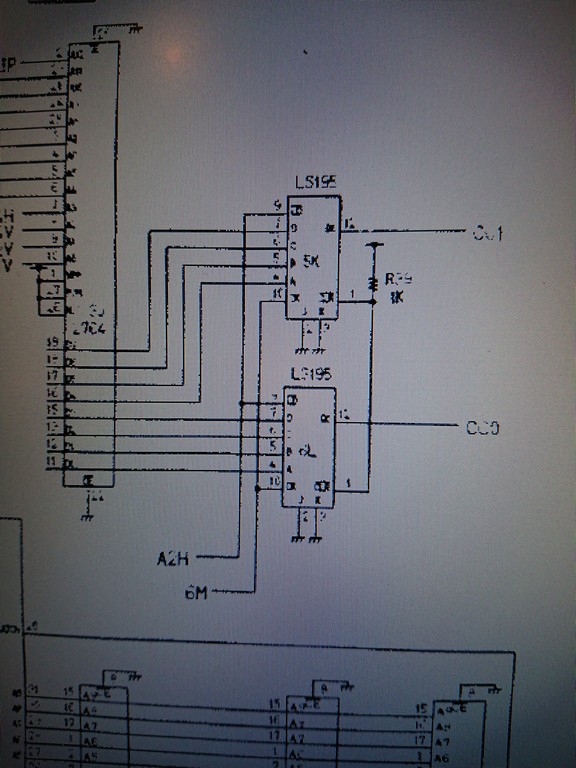
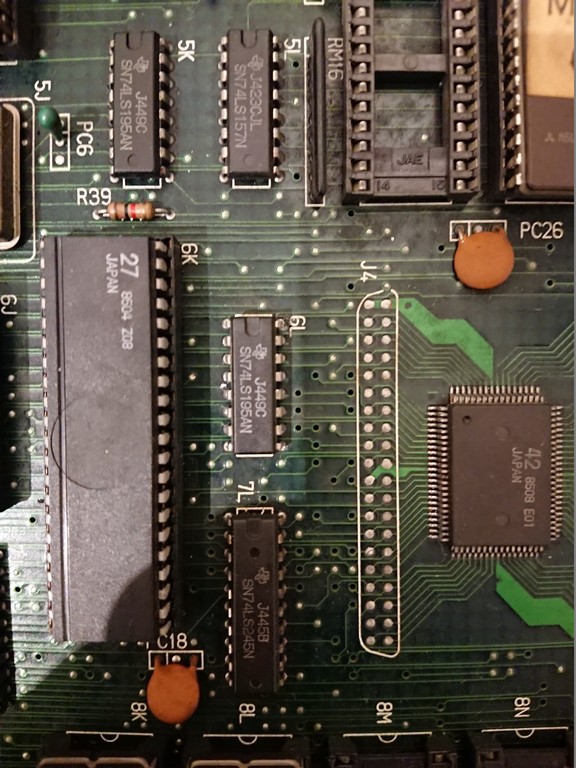
After changing it I finally had again the text
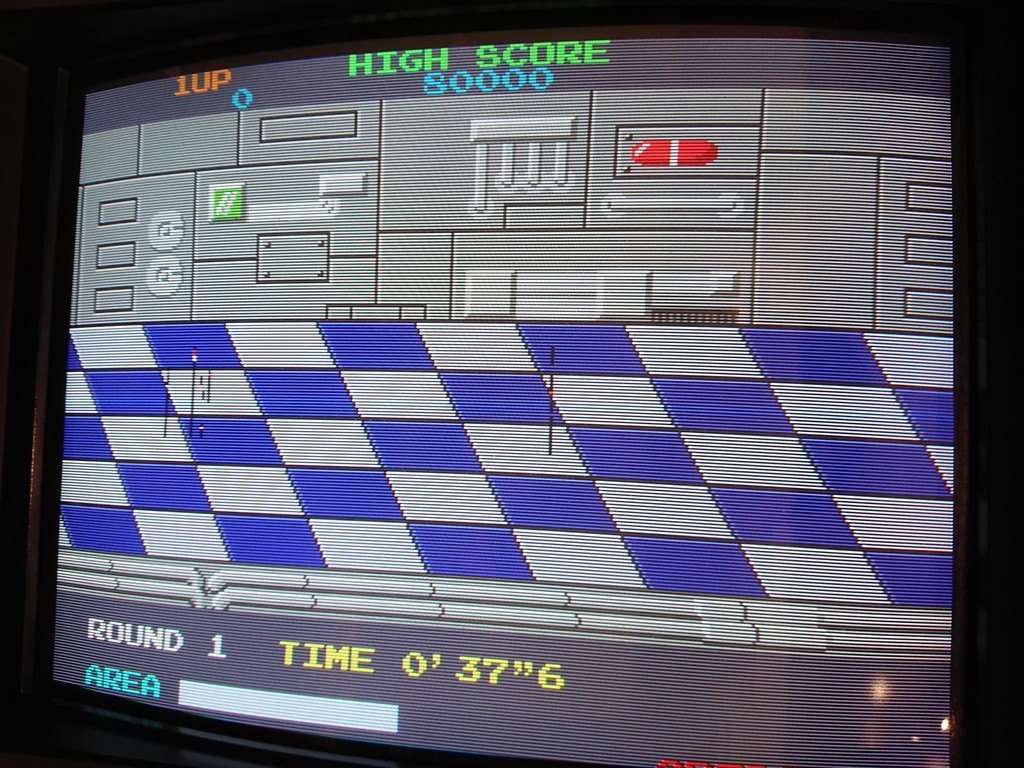
To restore the sprites I decided to concentrate on the \HSET signal on the sprite address generator circuit.
This signal comes from pin 22 of CUS35 and it was always stuck LOW. I took another CUS35 from a Baraduke board and the problem remained.
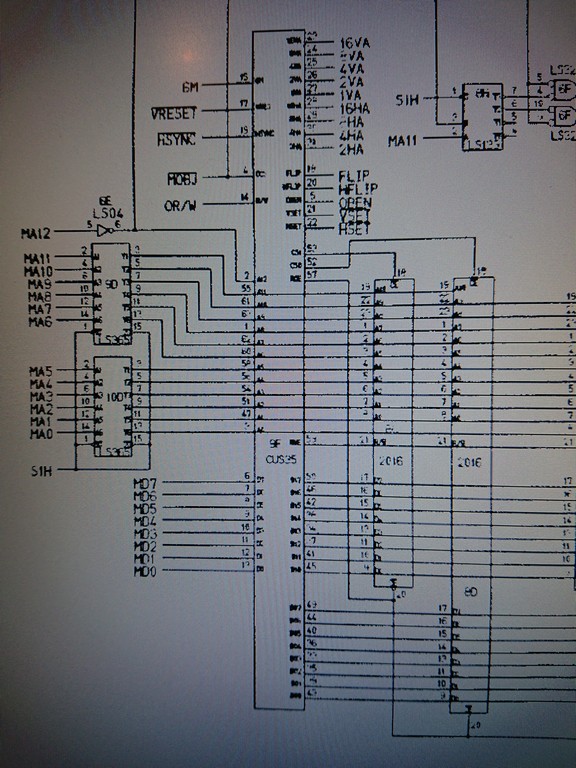
So I decided to look at the other side and checked two 74LS173@9N and 9P
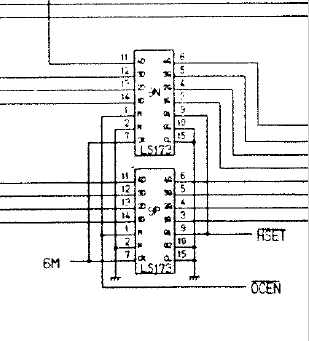
I shorted for a brief moment the \Hset signal to 5V and the sprites were correctly drawn again and the signal was oscillating.
But I noticed that some sprites has some glitching on colours.
I decided to replace both of them
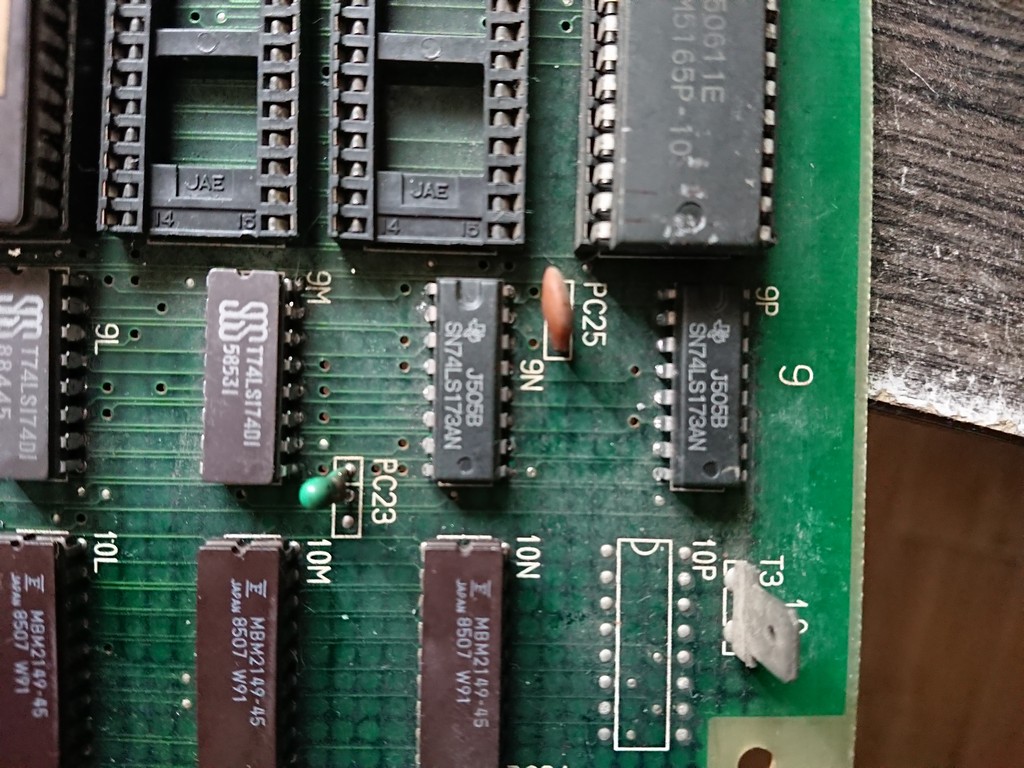
Board was 100% fixed
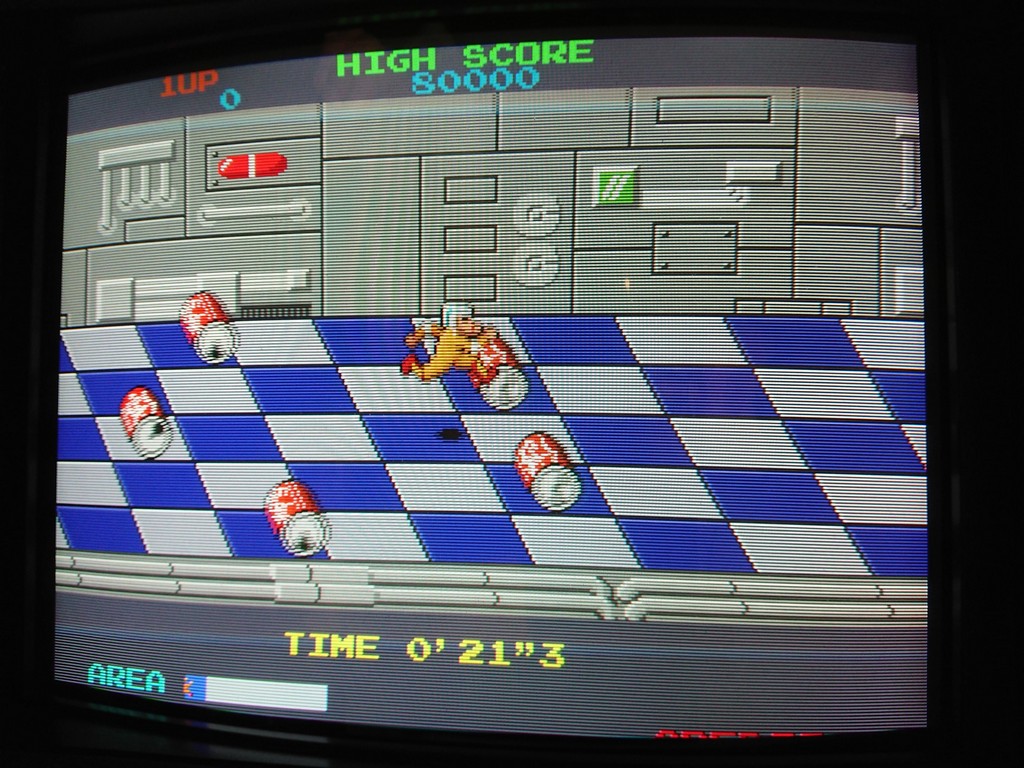
Of particular note is that all the faulty TTLs were by Texas Instruments ( not Fujitsu!) and of uncommon type.
It seems Namco had a stock of these ICs to be used on an hardware design 😉
Please note also that CUS35 is 100% compatible with CUS48 from later Namco system 1 games.

